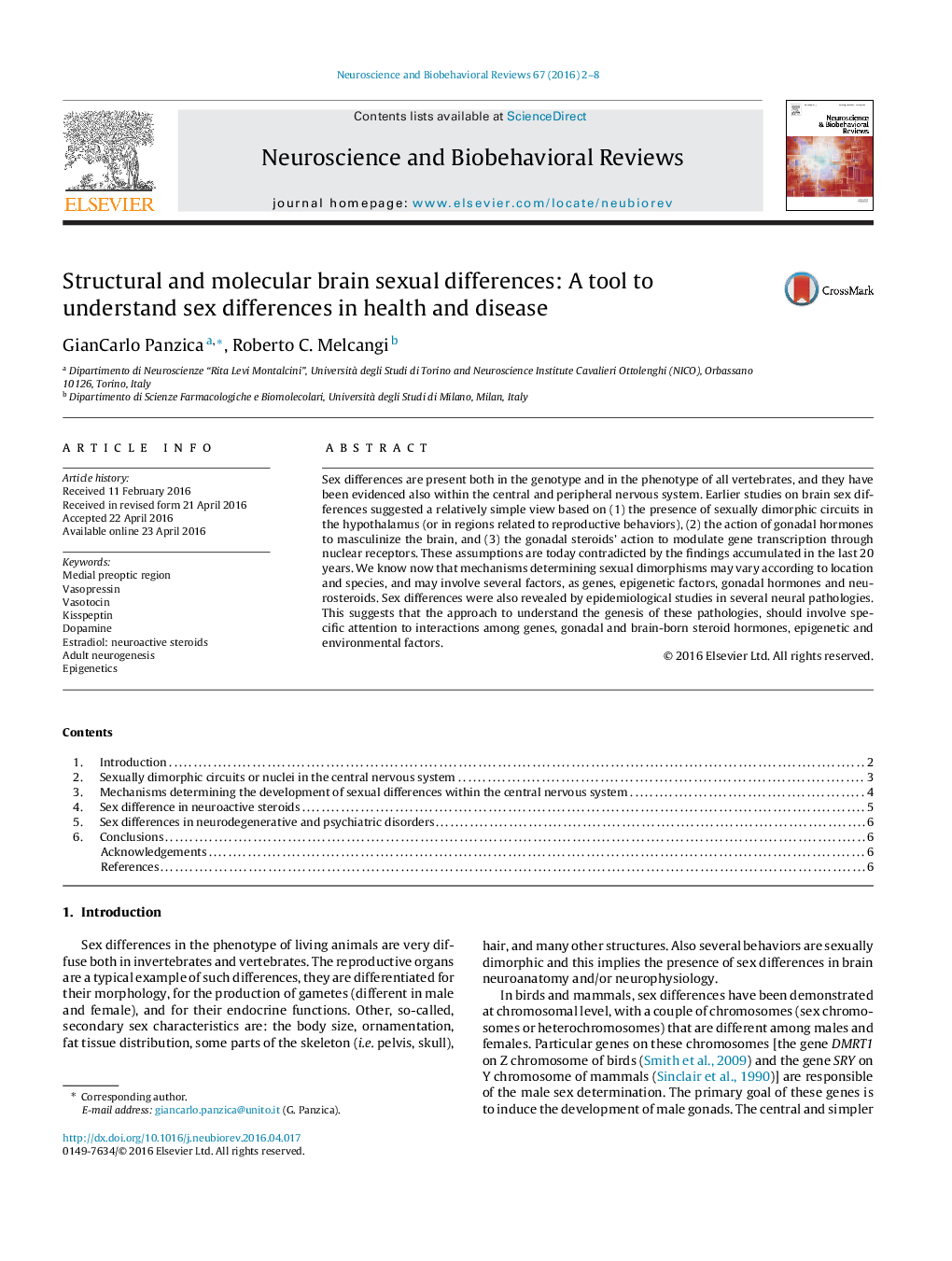| Article ID | Journal | Published Year | Pages | File Type |
|---|---|---|---|---|
| 937398 | Neuroscience & Biobehavioral Reviews | 2016 | 7 Pages |
•Sexually dimorphic circuits are present in many parts of the nervous system.•Sex differences span from large structures to very subtle neurochemical features.•These differences are based on different factors not limited to gonadal hormones.•Locally synthetized steroids, genome and epigenetic mechanisms are implicated.•Neuroactive steroids seem to be implicated in the genesis of some neural diseases.
Sex differences are present both in the genotype and in the phenotype of all vertebrates, and they have been evidenced also within the central and peripheral nervous system. Earlier studies on brain sex differences suggested a relatively simple view based on (1) the presence of sexually dimorphic circuits in the hypothalamus (or in regions related to reproductive behaviors), (2) the action of gonadal hormones to masculinize the brain, and (3) the gonadal steroids' action to modulate gene transcription through nuclear receptors. These assumptions are today contradicted by the findings accumulated in the last 20 years. We know now that mechanisms determining sexual dimorphisms may vary according to location and species, and may involve several factors, as genes, epigenetic factors, gonadal hormones and neurosteroids. Sex differences were also revealed by epidemiological studies in several neural pathologies. This suggests that the approach to understand the genesis of these pathologies, should involve specific attention to interactions among genes, gonadal and brain-born steroid hormones, epigenetic and environmental factors.
